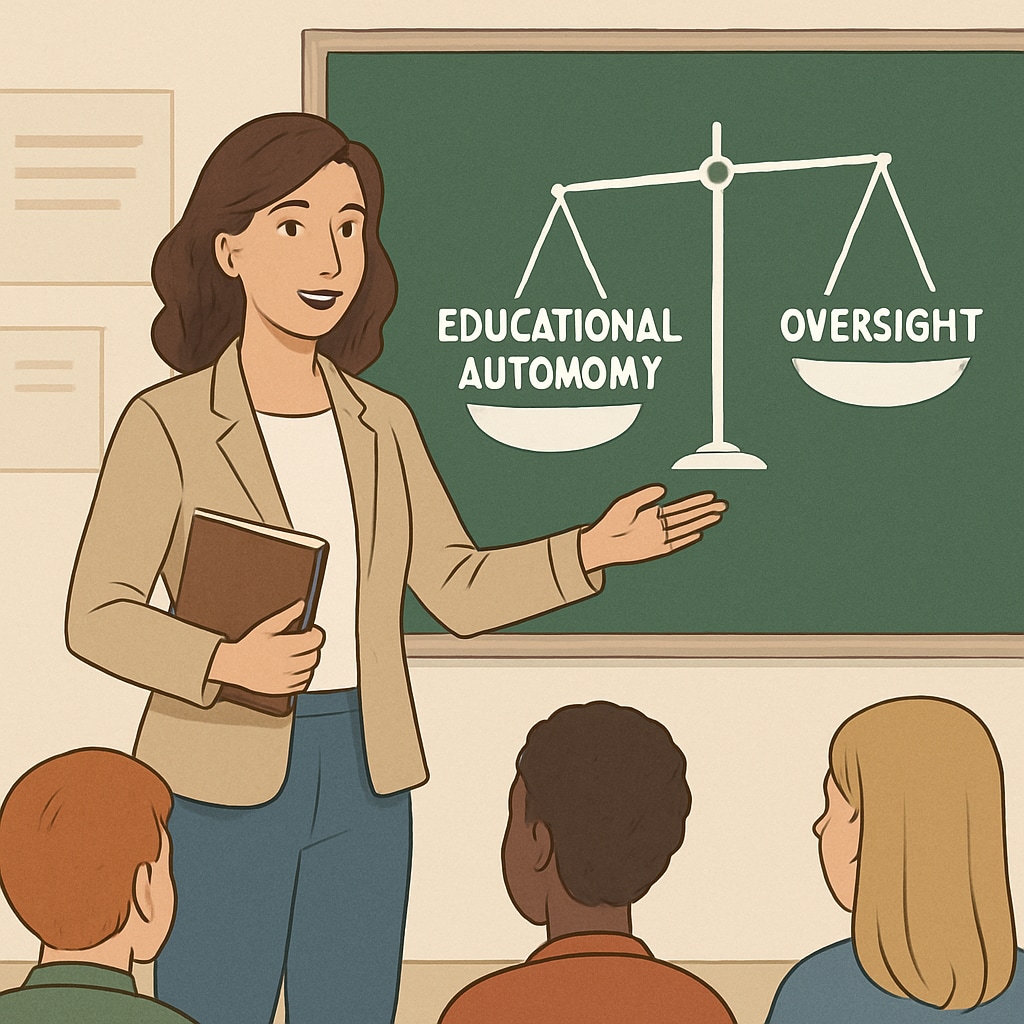The Heritage Foundation’s Project 2025 has thrust the topic of academic independence into the spotlight, sparking a contentious debate about the balance between maintaining educational autonomy and implementing external oversight. As conservative organizations push for greater transparency in university curricula, the ripple effects of this debate are increasingly felt in K12 education. This article delves into the core of this controversy and explores how educators, policymakers, and stakeholders might navigate this challenging landscape.
The Roots of the Controversy: Transparency vs. Autonomy
Project 2025, an initiative spearheaded by the Heritage Foundation, aims to reshape educational policies in the United States. A key element of the project involves demanding transparency in university classroom content, which proponents argue is necessary to ensure accountability and prevent ideological indoctrination. However, critics warn that such measures could infringe upon academic independence, a cornerstone of higher education.
Though initially targeted at higher education, the push for transparency has begun to influence K12 classrooms, where debates over curriculum content are already highly charged. From history lessons to discussions on social issues, educators face mounting scrutiny from both political groups and parents. The question arises: how can schools uphold the integrity of education while addressing demands for transparency?

Impact on K12 Education: A Double-Edged Sword
In K12 education, the demand for transparency has both benefits and potential pitfalls. On one hand, it offers parents a clearer understanding of what their children are learning, fostering trust in the education system. On the other hand, excessive oversight may stifle teachers’ ability to introduce critical thinking and diverse perspectives, ultimately limiting students’ learning experiences.
For example, educational policies influenced by initiatives like Project 2025 could lead to overly prescriptive curricula. Teachers might feel compelled to avoid controversial topics, fearing backlash or external interference. As a result, students could miss opportunities to engage with complex issues in a nuanced way.
Moreover, the administrative burden of complying with transparency requirements could divert resources away from actual instruction. Schools may need to allocate time and staff to document and justify lesson plans, leaving less room for innovation and creativity in the classroom.

Finding the Balance: Recommendations for Policymakers
To strike a balance between educational autonomy and external oversight, policymakers and educational leaders must approach the issue with sensitivity and nuance. Here are some recommendations:
- Define clear boundaries: Any transparency policy should respect teachers’ professional expertise and provide them with the autonomy to design and execute lessons without unnecessary interference.
- Engage stakeholders: Open dialogue between educators, parents, and policymakers can help build consensus on what constitutes reasonable oversight.
- Focus on outcomes: Instead of scrutinizing every detail of a lesson plan, oversight efforts should prioritize measurable outcomes that reflect students’ critical thinking and problem-solving abilities.
- Invest in teacher training: Providing educators with resources and training to navigate sensitive topics can ensure that classrooms remain spaces for open and informed discussion.
By adopting these strategies, it is possible to create a system where transparency enhances, rather than hinders, the educational experience.
The Road Ahead: Navigating a Polarized Landscape
As debates surrounding Project 2025 and academic independence continue, the stakes for K12 education remain high. Striking the right balance will require ongoing dialogue, compromise, and a shared commitment to the best interests of students. Policymakers must tread carefully to ensure that efforts to increase transparency do not undermine the very principles of education they seek to protect.
Ultimately, the goal should be to create a learning environment that empowers students to think critically, engage with diverse perspectives, and prepare for the complexities of the modern world. Achieving this will require collaboration, trust, and a recognition that education is a shared responsibility.
Readability guidance: The article uses short paragraphs, incorporates lists to summarize key points, and ensures a balance between professional tone and accessibility. Transitions such as “however,” “in addition,” and “for example” are used throughout to maintain flow and coherence.


